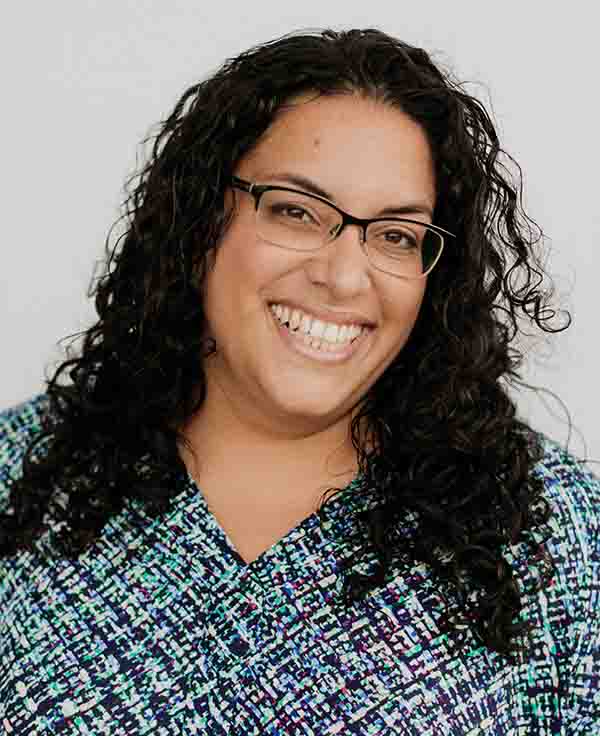Heather: As a Promise54 board member and a foundation staff member, navigating the space between my personal DEI values and the constraints of traditional philanthropic models is rewarding and challenging. I see my work in both capacities as pushing organizations to adopt transparent and racialized goals. I can serve as both a reflective mirror and an access point for other professionals of color, but that is also an additional burden for me in the work.
Xiomara: Promise54 has been honored to work with many foundations on their internal journeys toward being more diverse, inclusive, equitable, and antiracist. We have received critical foundation support as a grantee to advance our own research and to provide technical assistance on DEI, antiracism, and talent overall for other organizations across the field. We also have past and present funders on our Board, including Heather Harding, senior director of education grantmaking at the Charles and Lynn Schusterman Family Foundation
According to Unrealized Impact 2.0: The Hard Truth About Where We Are and Ways to Move Forward, education philanthropy may have the most work to do of any education sector organization type. In fact, education philanthropy is the least diverse organization type included in our research with two-thirds of foundation staff identifying as white. Further, at the CEO level where additional positional power, decision making, and access to resources live, eight in 10 CEOs identify as white. And these numbers are virtually unchanged since 2017.
The research findings have some insights into why we see very little change and, of course, a longstanding history of oppression is a key reason. Still, many education foundations have begun to articulate their commitment to do the work. Further, several foundations including Charter School Growth Fund, Nellie Mae Foundation, New Profit, New Schools Venture Fund, and Skillman Foundation have recently appointed People of Color as presidents, co-CEOs, interim CEOs, and CEOs. We are huge fans and close collaborators with many of these individuals.
Increased diversity, especially within the ranks of senior leadership, is a critical step. Without diversity, at best, the constant lack of opportunity and access for people with historically marginalized identities perpetuates inequities because organizations lack the diverse perspectives and experiences required to disrupt status quo thinking and innovate effectively. This risk is especially concerning in education philanthropy given its disproportionate influence in controlling and distributing resources to other organizations. At worst, consistent failure to racially diversify — especially leadership teams — is indicative of the persistent root-level white supremacist belief that white folks are more able (smarter, better problem-solvers, more qualified, etc.) to lead and to solve the most vexing social justice challenges.
However, diversity is not enough. Without inclusion and equity, organizations typically experience costly revolving-door staff attrition, along with perceptions of an assimilationist culture. As a result, organizations focused exclusively on diversity often perpetuate additional identity-based harm (e.g. racialized harm) even with intentions to do the opposite.
Unfortunately, our data shows that many staff in philanthropy believe their organizations have a long way to go on all three dimensions: diversity, inclusion, and equity. The majority of funders in our survey are categorized as “Early Stage” organizations, according to Promise54’s four DEI profiles. Early Stage organizations are characterized by relatively low staff perceptions of diversity, inclusion, and typically low equity. Individuals who perceive their organization as Early Stage report experiencing bias at higher rates and lower intentions to stay at the organization Intent to Stay (a forward looking measure of retention) and Net Promoter Scores (a measure of engagement and satisfaction).
This should come as no surprise, given the reality of a philanthropic sector predicated on the accumulation of immense wealth – wealth that has historically been available primarily to white men – and, as described by Edgar Villanueva, designed to advance “top-down, closed-door, and expert-driven” practices. Emerging from a charity framework, philanthropic initiatives often have a built-in assumption that the philanthropist knows best, given their positional power and economic success. Historically, we know that many oppressive moves actually created the wealth gaps we see, yet very few reforms in the sector have resulted in structural changes in philanthropy or in the operations of grant making. The work of MacKenzie Scott has highlighted this, by calling into question the model of philanthropy that elevates intensive screening, robust grant reporting, and measurement infrastructure.
This is particularly true in family and individual philanthropy where the role of family identity and donor choice dictates priorities overlaid with both corporate culture and operational approach. Many educational funders live in a realm where accepted business practice meets familial preference and equity concerns die in the gap between. Staff expertise and recommendations are a weak match against family wishes.
Equity work in philanthropy offers a long runway of opportunity. There is no perfect place to start DEI and antiracist work. Organizations need to utilize approaches tailored to their context and where they are on their journey. That said, here are some recommended starting points for philanthropic organizations:
-
- Do the work: Funders should work to make true internally the changes that they seek to advance externally. Effective internal DEI and antiracism can interrupt the existing mechanisms that maintain status quo inequities and give funders a better understanding of what grantees are working through as they engage in this work. Philanthropic organizations should take stock of their current policies, practices, staff experiences, and demographics, clearly articulate their beliefs and aspirations around this work, and create a written, well-defined strategy for living them out. They also must offer transparency with grantees about where they are in their journey, what they’re working on, and what they’re struggling with — all while asking grantees to do the same.
-
- Orient around those most impacted. We often see funders establish their theory of change, set strategy, and develop funding opportunities as the “experts” on what is best for the communities they seek to impact while lacking the lived experience or cultural understanding critical to informing effective approaches. Instead, funders need to orient decision-making, especially in early stages, to engage and center those they serve and support. Specifically, funders should bring community memberst into the room to inform critical philanthropic strategy and design decisions (along with appropriate compensation for time and expertise). Further, funders must intentionally employ practices that create psychological safety, interrupt protection of white comfort, and mitigate the impact of hierarchy, privilege, and positional power to enable full involvement in the room.
-
- Rethink practices and measurements: Changing business-as-usual requires consideration of the practices and metrics foundations use to measure impact and drive strategy. If these aren’t informed by community inputs, they can miss the mark. Consider how venture-capital approaches privilege particular kinds of grantees; co-construction in philanthropy must be much more thoughtful than market approaches and requires a justice and repair framework.
-
- Disproportionally invest: Funders should not only directly invest in leaders who come from and represent the communities served, they should disproportionally invest in them. To course-correct a longstanding inequitable system, funders should work intentionally to spot bias in decision-making, and interrogate the ways in which current grantee recruitment and selection practices may be negatively impacting leaders with historically marginalized identities, and rethink distribution of investments. This includes examining the number of grants, grant amounts, share of overall, and length of investments in Leaders of Color and leaders with other historically marginalized identities. Proportionate support is not enough.
-
- Set and elevate standards: Until philanthropy writ large is oriented in justice, funders have the power to either incent and enable advancement of DEI and antiracism across the field, or be complicit in the continuation of harm. Funders should leverage their power toward progress by establishing a carefully considered and clearly defined set of baseline indicators related to DEI and antiracism that they expect to see for any organization to receive investments (e.g., clear statements of organizational commitments around DEI and antiracism, or clear expectations of improvement, growth, change, or gains over time). Further, funders can make investments in maintaining and growing a healthy ecosystem of available supports for organizations driving progress on DEI and antiracism.
Check out our detailed findings, promising practices, and recommendations in the report: Unrealized Impact 2.0: The Hard Truth About Where We Are and Ways to Move Forward
HEATHER HARDING
Board Member
She/Her/Hers
XIOMARA PADAMSEE
Founder & Chief Executive Officer
She/Her/Hers
Contact Xiomara: xiomara@promise54.org


